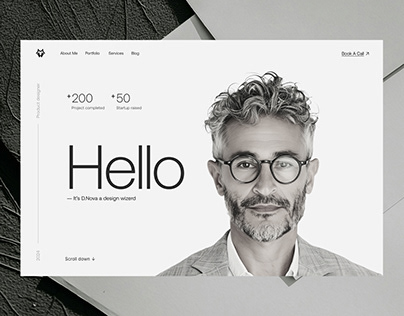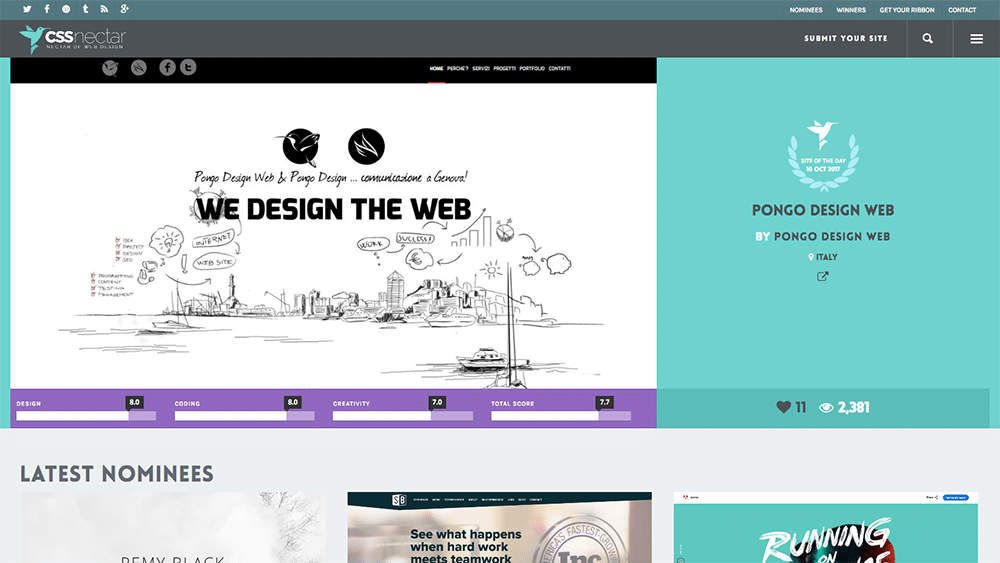Key Elements of Effective Website Design: A Complete Overview
Key Elements of Effective Website Design: A Complete Overview
Blog Article
Modern Web Site Layout That Catches Interest and Transforms
In an increasingly digital landscape, contemporary web site layout has actually arised as an essential factor in capturing individual interest and driving conversions. As we discover these crucial components, it becomes clear that comprehending their interaction can dramatically affect a site's efficiency and customer complete satisfaction.
Significance of Visual Hierarchy
Aesthetic hierarchy is a critical element in site design, as it guides users' focus and boosts their total experience. By strategically organizing content, developers can guide individuals to the most essential details first, thereby raising involvement and enhancing functionality.
Incorporating a rational circulation in material plan is vital; for instance, positioning one of the most crucial info at the top of a web page promotes immediate recognition. Furthermore, consistent use typography, such as varying font dimensions and styles, aids develop a clear content framework. This organization not only aids in navigation yet additionally develops trust, as individuals feel more comfortable when they can conveniently locate what they are trying to find.
Eventually, a well-executed visual hierarchy not just improves visual appeal yet additionally considerably affects individual habits. By focusing on necessary aspects and making sure a smooth experience, designers can successfully transform site visitors into clients, reinforcing the value of this foundational layout principle in contemporary web site advancement.
Responsive Design for All Instruments
Developing a seamless experience throughout different gadgets is necessary in today's electronic landscape, where customers access web sites from tablets, desktops, and smartphones alike. Responsive layout is a vital technique that guarantees sites adapt fluidly to different screen dimensions, resolutions, and orientations. By using flexible grids, pictures, and CSS media queries, developers can create formats that keep aesthetic integrity and performance, despite the tool being used.
The relevance of receptive layout extends beyond visual appeals; it straight influences customer interaction and conversion prices. A web site that operates well on all gadgets encourages longer gos to and minimizes bounce prices, as individuals are extra most likely to connect with content that is simple to navigate. Furthermore, online search engine, particularly Google, focus on mobile-friendly websites in their positions, making responsive design a vital component of search engine optimization (SEARCH ENGINE OPTIMIZATION)
Integrating receptive layout not only enhances customer experience however also simplifies the advancement procedure. By developing a single site that functions across gadgets, companies can conserve time and sources contrasted to establishing different mobile and desktop variations. Eventually, responsive style is an essential method for contemporary website style, guaranteeing accessibility and satisfaction for all customers, no matter their tool.
Engaging Interactive Components
While a receptive layout lays the foundation for a functional website, incorporating interesting interactive aspects is vital for catching user attention and cultivating much deeper links. Website Design. Interactive elements, such as computer animations, tests, and clickable infographics, develop a much more dynamic user experience, encouraging site visitors to invest more time on the site
Incorporating blog interactive attributes can additionally assist individuals with complex information, making it less complicated to absorb material. Interactive sliders can highlight item variations, while ingrained videos can provide demos or testimonies that resonate even more than static photos or text. Gamification strategies, like rewards for engaging or finishing tasks with content, can enhance user inspiration and retention.
Effective use interactive components not only improves the user experience however can also cause higher conversion rates. By making communications satisfying and insightful, organizations can cultivate a sense of commitment and count on with their target market. It is important to stabilize interactivity with efficiency; extremely complex functions might prevent website speed, negatively impacting customer satisfaction. Ultimately, integrating properly designed interactive components can considerably raise a web site's efficiency, driving engagement and conversions in today's competitive digital landscape.
Structured Navigation Practices
Effective navigating is a keystone of any kind of effective internet site, as it straight affects individual experience and material availability. Streamlined navigation practices ensure that users can easily situate details, improving their interaction with the website. A well-structured navigating menu ought to be easy and intuitive, typically including a minimal number of primary classifications to stay clear of frustrating visitors.
To achieve structured navigation, developers must prioritize a hierarchical framework that realistically organizes web content. Executing breadcrumb trails can give individuals with context about their existing place within the site, enabling seamless backtracking. In addition, using drop-down menus can properly save space while still supplying access to subcategories.
Receptive design is crucial, as navigating should be useful across all gadgets (Website Design). Mobile users, specifically, gain from touch-friendly food selections and collapsible areas that maintain functionality without endangering appearances

Effective Call-to-Action Approaches
A well-crafted call-to-action (CTA) is vital for directing customers toward wanted results on a website, as it motivates them to involve with material or make an acquisition. To maximize their efficiency, CTAs must be clear, engaging, and strategically placed throughout the site.
First, make use of action-oriented language that communicates seriousness or worth, such as "Start," "Join Now," or "Case Your Discount." This language not only encourages users however additionally sets clear assumptions concerning the next steps.
2nd, consider layout elements; CTAs must stand out aesthetically via contrasting colors, enough whitespace, and popular positioning. A switch that is easy to see and click boosts the likelihood of customer interaction.
Additionally, individualizing CTAs based on customer actions or demographics can considerably enhance involvement. Customized messages reverberate more with individuals, driving greater conversion prices.

Verdict
To conclude, contemporary internet site design emphasizes the combination of aesthetic power structure, receptive layouts, engaging interactive aspects, structured navigating, and reliable call-to-action strategies. These components collectively improve individual experience, making certain that visitors remain engaged and inspired to check out material better. By prioritizing these design principles, services can significantly improve user retention and conversion rates, ultimately resulting in higher success in the electronic landscape. The continual advancement of website design underscores its essential role in efficient online interaction and advertising and marketing.
In an increasingly electronic landscape, contemporary site design has actually emerged as a pivotal factor in recording individual attention and driving conversions.Aesthetic power structure is a crucial component in web site design, as it overviews individuals' attention and boosts their general experience.The significance of receptive style extends past looks; it directly influences browse around this web-site individual interaction and conversion rates.Including responsive layout not only enhances individual experience but also simplifies the advancement procedure. Eventually, receptive style is a fundamental approach for modern internet site style, ensuring access and fulfillment for all users, no matter of their device.
Report this page